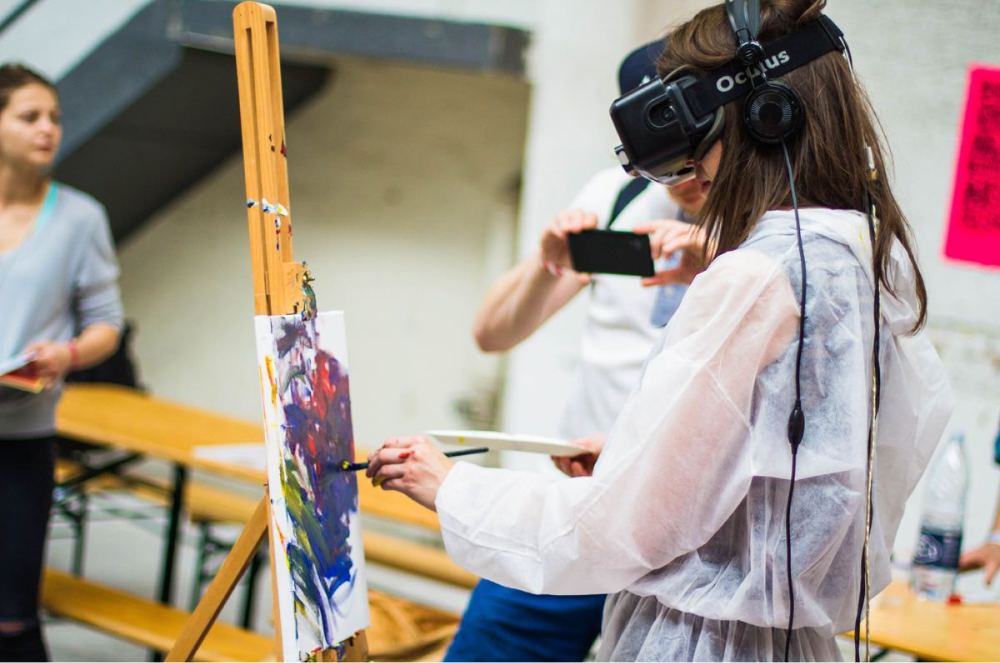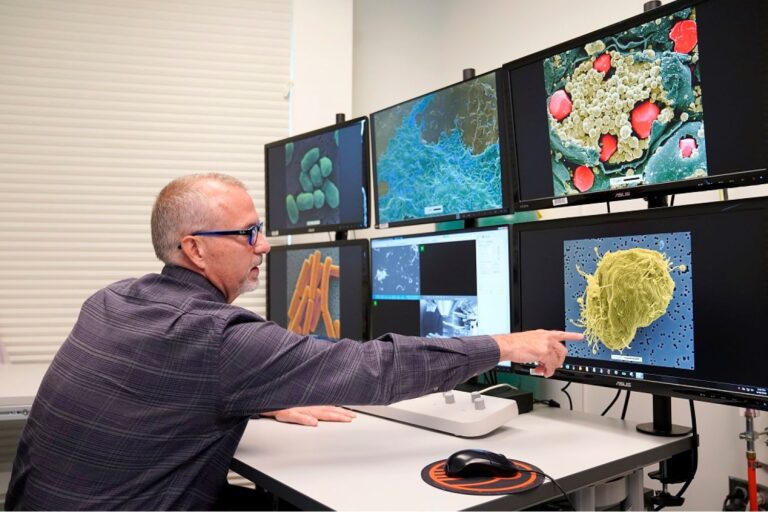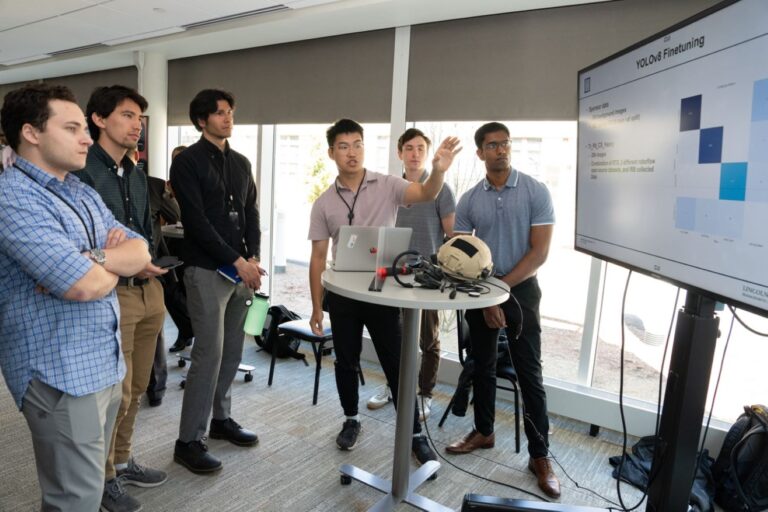Educational AI: How Does It Disrupt Learning & Teaching Experiences?
“Socially Aware” Artificial Intelligence (AI) is disrupting almost every single aspect of the modern world – from improving cancer diagnosis and autonomous ambulances, to advanced energy storage, AI gives humans new ways to “invent” better lives. Whereas AI is rapidly reshaping the ways that industries like healthcare, banking, energy, and retail operate, there is one in particular that does offer incredible potential for the application of AI technologies: Education.
AI adoption within the educational landscape – beyond any doubt – has left significant impacts on teaching and learning. But how does it exactly mean? What is the current state of the art in AI? How has it revolutionized the educational experiences for both teachers and students? How has schooling organizations and institutes applied AI-powered solutions in real life? Let’s read on to uncover!
Recent Developments: How Educational AI is “Making the Grade”
According to Joint Research Centre (JRC), until recently, educational applications of AI have mainly focused on the knowledge-based approach. Actually, the most prominent line of research has been concerned with Intelligent Tutoring Systems, or ITS for short.
Adopting a knowledge-based architecture, ITS is a computer system that aims to provide immediate and customized instruction or feedback to learners, usually without requiring intervention from a human teacher. A typical ITS architecture has a domain model that describes the area to be learned and a student model that describes the current state of student’s knowledge and learning. In the meanwhile, an expert system or pedagogical model manages the introduction of learning materials to the student through an adaptive and interactive user interface.
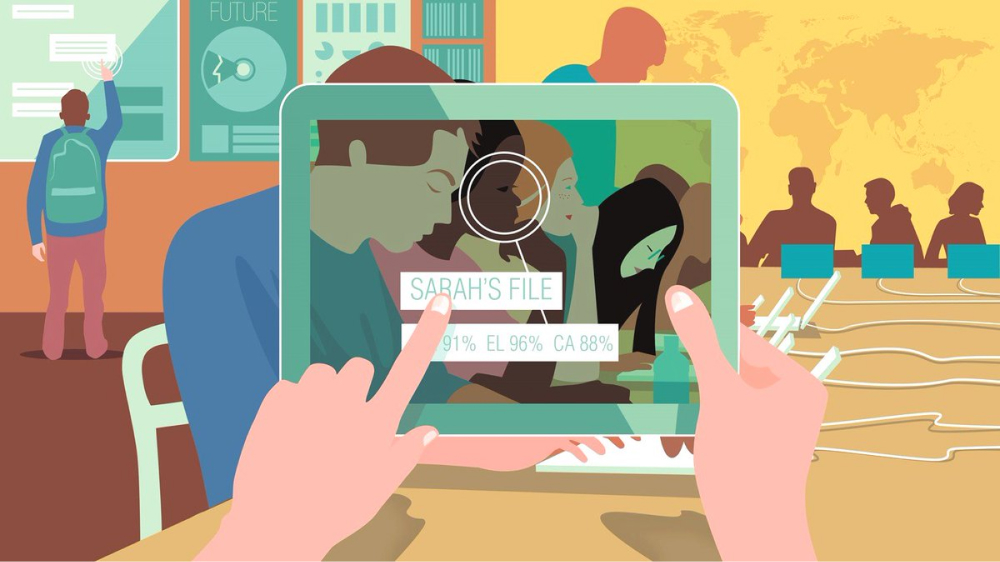
Such AI-powered systems have been successfully adopted, especially in relatively limited and unambiguous domains, such as mathematics and physics. Since student behavior and learning can also be monitored in ITS environments down to the last detail, Intelligent Tutoring Environments prove themselves a vital source of data for research on learning.
To be more specific, such AI-based approaches have shown great potential in the early detection of dyslexia. In fact, a Swedish company “Lexplore” has developed a system that quickly scans for students at risk and detects dyslexia by tracking reader eye movements. The system employs data-based pattern recognition, and the company is now expanding to the US and UK, offering school and school-district wide scanning. Furthermore, a few AI-powered systems have been successfully developed for the diagnosis of autism spectrum disorder and attention deficit hyperactivity disorder (ADHD). In particular, child-robot interaction seems to enable new forms of diagnostics and special needs educational applications.
More than that, as student testing performs an indispensable role in many educational systems, many schooling projects are investing huge efforts to explore the use of AI for automatic test generation and assessment. Such work is mainly aimed at automating summative assessment, with a promise of reducing teacher workloads. Nonetheless, a possible unintended consequence of this work is that high-stakes testing will be increasingly displaced by frequent low-stakes formative assessment because the effort and cost required for assessment decreases.
It’s also noteworthy that the current AI systems are good in combining evidence from complex and varied sources of data and leveraging them for real-time pattern recognition. To take an example, student homework can relatively easily be checked and diagnosed by an AI-based system that has data on both individual student history and peer responses. Accumulated formative assessments could, therefore, to a large extent make high-stakes testing redundant.
Another outstanding AI application is that it has gradually been adopted to diagnose student attention, emotion, and conversation dynamics in computer-supported learning environments – for instance, for course development and management – in an attempt to generate optimal groups for collaborative learning tasks as well as to recognize patterns that predict student drop-out. To do this effectively, large datasets are needed for training the systems, which is a major technical bottleneck.
Additionally, it’s a “must” that student behavior is actively monitored to provide feedback for learning. This creates technical needs to unobtrusively monitor students, such as using video processing and remote eye tracking, with associated ethical and regulatory challenges. Ethically less problematic are systems that use less granular data to provide recommendations. For example, at the University of California, Berkeley, students can now get course recommendations using a system that relies on neural AI technologies originally developed for natural language processing and machine translation.
Impacts of AI on Education: How AI Shakes Up the Educational Landscape
#1. Major Impacts & Implications of AI on Learning
There is no denying that AI can leave both positive and negative impact on learning in the formal educational settings. When a new promising technology emerges – and when the limitations of technology and the challenges of applying it are often not perfectly understood, technology may seem to open radically new possibilities for solving old problems.
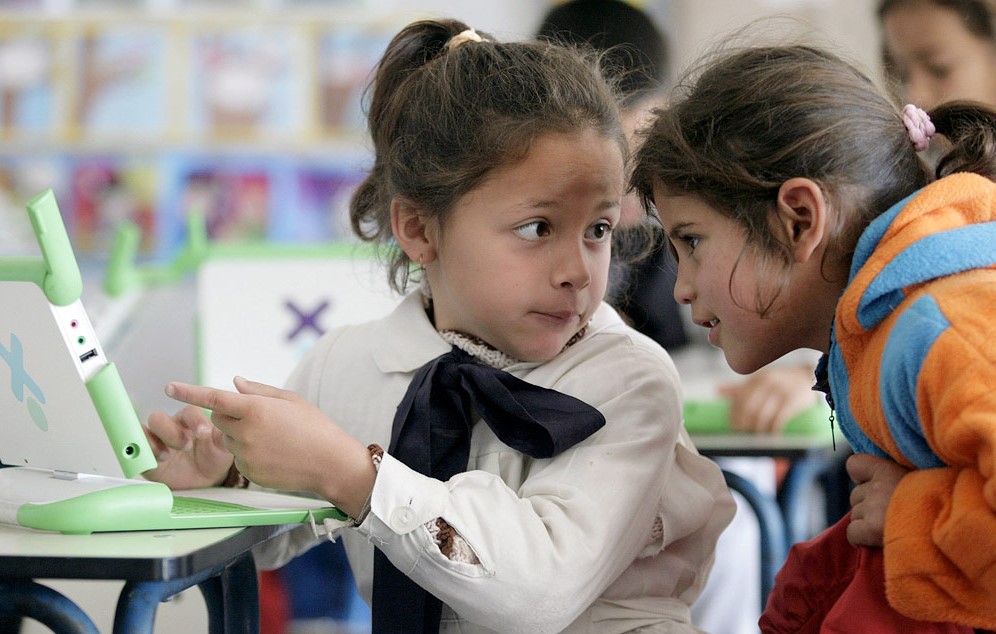
When it comes to learning, AI will not only make existing education more efficient but that it will also change the context where learning occurs and where it becomes socially relevant. Actually, several current learning practices have managed to address the needs of modern society that is currently being transformed. It is easy to automate things that merely “institutionalize” old habits.
However, in an ever-changing world, this often creates frustration as some solutions can become obsolete already before they are implemented. Employing technology, it may be possible to revolutionize learning but it is also possible to automate ideas and replicate practices that have little to do with learning.
To take an example, the promise of Massive Open Online Courses (MOOCs) has been widely noted but their real impacts on “delivering desired learning outcomes” are rarely known. As it is possible for one teacher to teach a large number of students in online environments but quite challenging to know what the students learn, one of the great potentials of AI is to do large-scale learning analytics in such environments.
Particularly, it is often suggested that AI could be used to objectively assess student learning by scoring test results without teacher bias. Given enough human-labeled examples of data, neural AI and machine learning can easily learn to categorize students based on their test results. It is, nevertheless, not clear that test results are accurate indicators of learning capacities.
To support learning, it is of greater significance to measure individual development -rather than average performance in standardized tests. Current neural AI systems are a natural fit with learning models that view learning as the transfer of knowledge to students’ minds. Should learning be understood as the development of skills and competences, AI may need to be incorporated in learning processes in different ways.
As regards cognitive development, AI can be adopted in three essentially different ways that may have different implications for the development of human cognitive capabilities both in children and adults.
- AI can support existing capabilities: When competences are understood as combinations of domain-specific expertise and behavioral repertoires, AI can reduce the need for human knowledge, experience, and skill when emphasizing the importance of behavioral repertoires.
- AI can speed-up cognitive development and create cognitive capabilities that would not be possible without technology: The mechanization or human work has made possible things that would be impossible without technology. Similarly, the mechanization of cognitive work makes possible new activities that have not been possible before.
- AI may reduce the importance of some human cognitive capabilities, or make them obsolete: For instance, as AI can convert speech to text and vice versa, dyslexia may become socially less important than it has been in the past.
#2. Major Impacts & Implications of AI on Teaching
Whilst the impacts of AI on teaching are inherently linked to foresight-oriented work on the future of learning, there are some educational tasks where AI can have a clear effect. Let’s go explore!
AI-Generated Student Models & New Teaching Opportunities
In principle, data-based neural AI is well suited for diagnostic tasks – it can create representations of student models in complex domains and in the realistic context of learning if sufficient amounts of data are available. Given enough data, machine learning can probably develop student models that are good enough to be of practical value.
Additionally, AI-based technologies can learn patterns of interaction and associate these with relevant teaching clusters so that a teacher can have a better understanding of the ways in which students think and where they could be effectively guided. As AI systems do offer such diagnostic data also to the students themselves, they can reflect on their metacognitive approaches and possible areas in need of development.
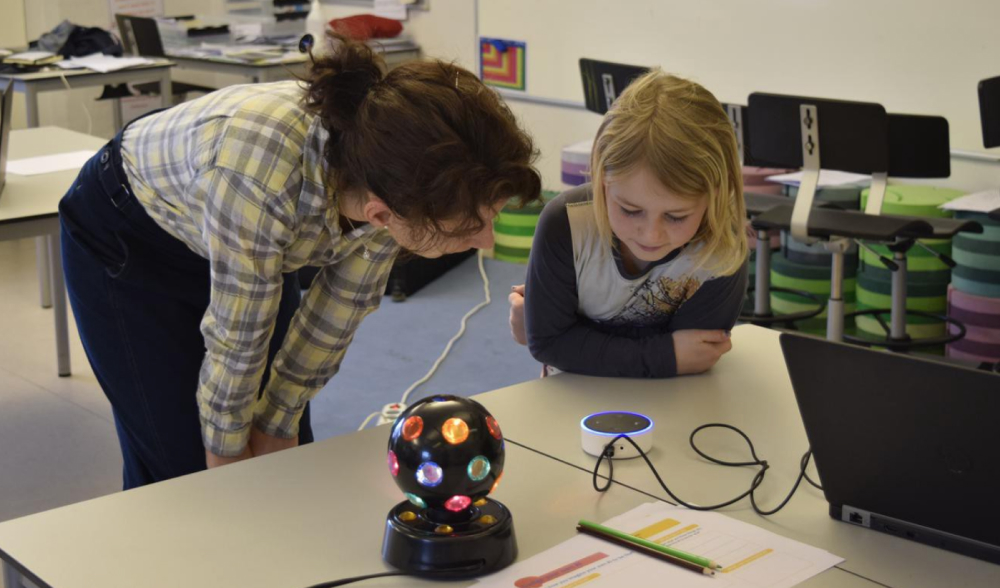
More than that, the rapid advances in natural language processing and AI-based human-machine interfaces will open up new pedagogical possibilities. For example, as conversational robots and learning companions are becoming more and more available, learning by teaching robots shows some potential. Affective computing and emotion AI will be important components of such systems. Real-time machine translation also generates exciting possibilities in language learning, in which AI systems can be used – for instance, to interpret texts written by students thus helping them to write texts that communicate better what the student intended to communicate.
The Need for Future-Oriented Vision Regarding AI
It is completely possible to imagine many fascinating possibilities for AI in teaching. Yet, without clear teaching principles, it’s probable that AI vendors will provide products and services that just address key decision-makers’ perceived immediate problems, instead of more fundamental social and economic challenges!
For an AI start-up in the educational sector, it is – understandably – challenging to offer products and services that require changes in current educational practices. Therefore, without clear visions that put emerging technical possibilities in the broader context of the transformation of education and the future of learning, educational AI will probably be provided as short-term solutions to existing problems. Instead of renewing the system and orienting it towards the needs of the knowledge-based economy, AI may merely “mechanize” and reinvent outdated teaching practices, making them increasingly difficult to change.
Therefore, it’s a “should” that educational experts and enthusiasts form appropriate visions and policies by simultaneously creating future-oriented models for education and teaching. Creating concrete experimentations in an authentic context with teachers and experts in education is – of course – more than vital. AI is now frequently called “the new electricity.” It is therefore important that teachers, who often struggle with concrete demands of everyday teaching practice and new initiatives, will not be negatively “electrocuted” by this new technology.
Real World Examples: How AI Is Adopted in Education
Undoubtedly, the adoption of artificial intelligence is on the rise: Based on research firm Gartner, approximately 37 percent of organizations have now “implemented AI in some form,” and adoption is up 270 percent over the past four years.

Players within the educational landscape are also following suit: Technavio’s “Artificial Intelligence Market in the US Education Sector 2018-2022” report predicts a nearly 48 percent growth rate for AI tools over the next three years. Now, let’s take a look over different ways some prominent Edtech companies are applying such tools to develop their solutions.
#1. MobyMax
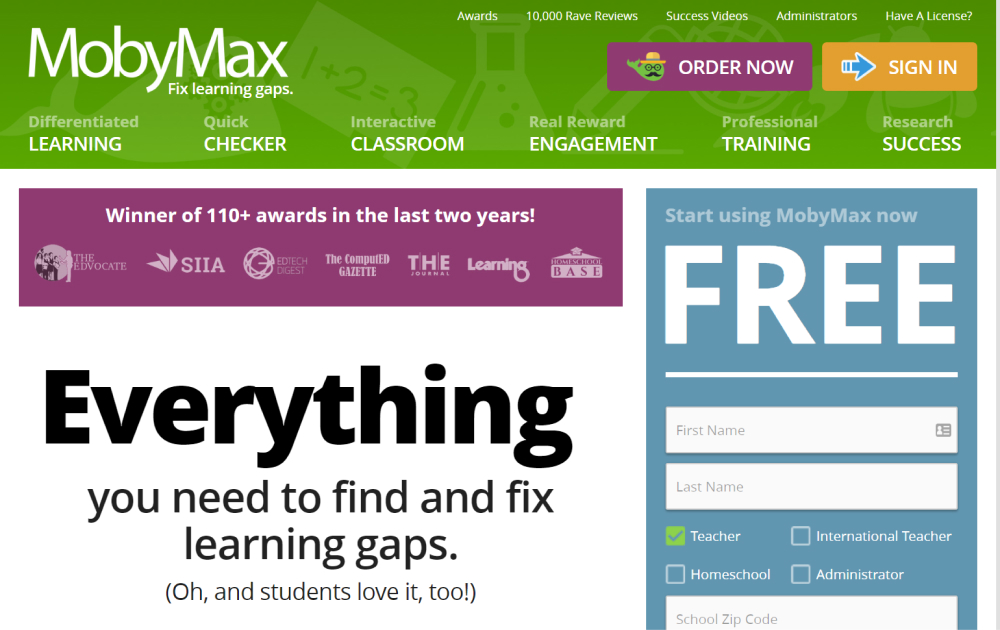
As a free web-based learning tool, MobyMax has employed Artificial Intelligence to create a complete K-8 differentiated and adaptive curriculum for Math, Language, Vocab, and Fact Fluency. With the help of machine learning algorithms, MobyMax does provide personalized lessons for each student based on their individual needs.
In fact, machine learning empowers MobyMax to pinpoint and fix learning gaps with adaptive and differentiated learning materials for all K-8 subjects. Students can learn at their own pace with lesson plans and practice sheets that are automatically generated for them.
The reason MobyMax’s effectiveness is double that of other leading solutions is that students are motivated not only with Real Rewards but also a dozen different motivation modules, from badges to game time. Actually, the secret sauce of MobyMax is finding the right blend that maximizes student motivation but minimizes the amount of “motivation” time in order to maximize learning time.
MobyMax was the most awarded EdTech company in 2018, earning 49 industry awards, including the prestigious CODiE award for Best Pre-K/Early Childhood Learning Solution and the 2018 Tech Edvocate Award for Best Global EdTech Company. The multi award-winning platform is the most widely adopted Edtech platform in the U.S.
#2. Discovery Education
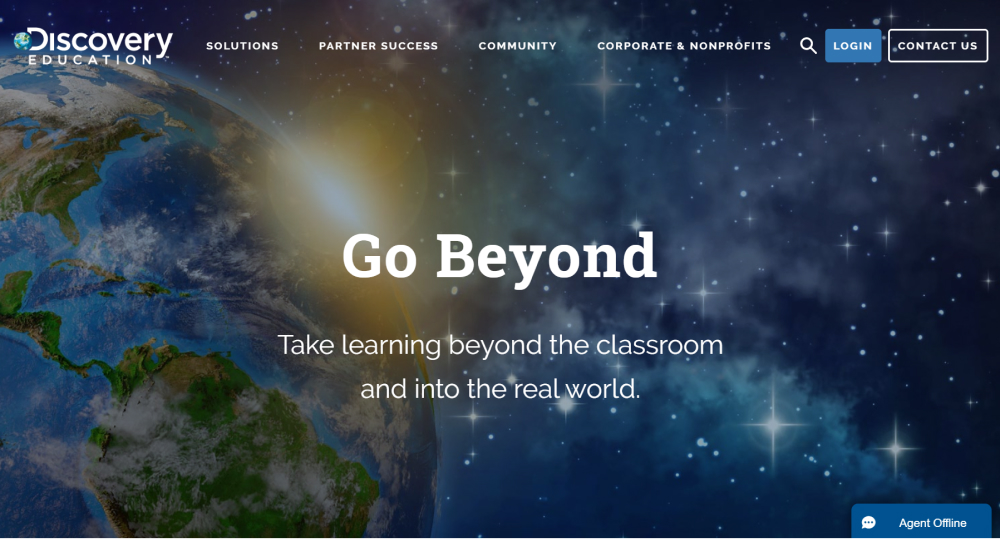
Similar to MobyMax, Discovery Education is also a big player in EdTech. The company has established itself as the leading provider of standards-aligned digital curriculum resources, digital content, and professional development for K-12 classrooms. Around 5.6 million students across all 50 states and Canada are currently using Discovery Education up to 2019.
It’s also noteworthy that Discovery Education Streaming Plus – the comprehensive digital service supplementing instruction across all K-12 curricular areas – was recently the winner of the EdTech Digest’s Cool Tool Award in the Content Provider Solution category.
To be more specific, Discovery Education Streaming Plus is a comprehensive digital service supplementing instruction across all K–12 curricular areas. Such an AI-based teaching platform empowers educators to create dynamic learning environments that mirror students’ use of technology outside the classroom. Teacher resources include lesson plans, instructional strategies, and content collections organized around themes. Students can access images, primary source documents, podcasts, oral interviews, books on tape, articles, and videos, as well as a collection of new STEM resources designed to fuel a cultural shift in teaching and learning.
#3. Volley
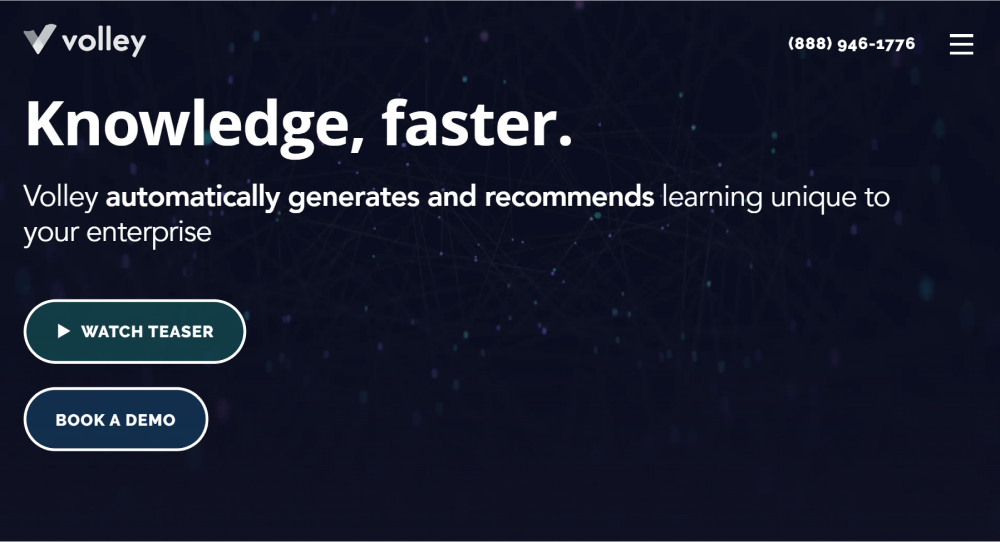
Educational technology doesn’t have to be implemented in the classroom – Volley’s AI-based “Knowledge Engine” constantly synthesizes course and quiz results, as well as briefings to find knowledge gaps among employees in enterprises. With the aid of AI and machine learning, Volley delivers personalized learning and knowledge management to the front lines of several businesses worldwide.
Built by a world-class team of machine learning and natural language processing innovators formerly of Google, the U.S. intelligence community, Carnegie Mellon, and top Wall Street tech divisions, Volley’s knowledge engine cuts the cost of generating, organizing, and delivering key knowledge by up to 50% – a giant leap in the automation and personalization of enterprise learning and knowledge management.
With customers throughout Fortune 100 financial services, Volley has been identified as a top AI innovator for learning in Harvard Business Review and is a seminal partner of the UC Santa Cruz Center for Excellence in Data Science Research.
#4. Elemental Path: The Parent Company of Cognitoys
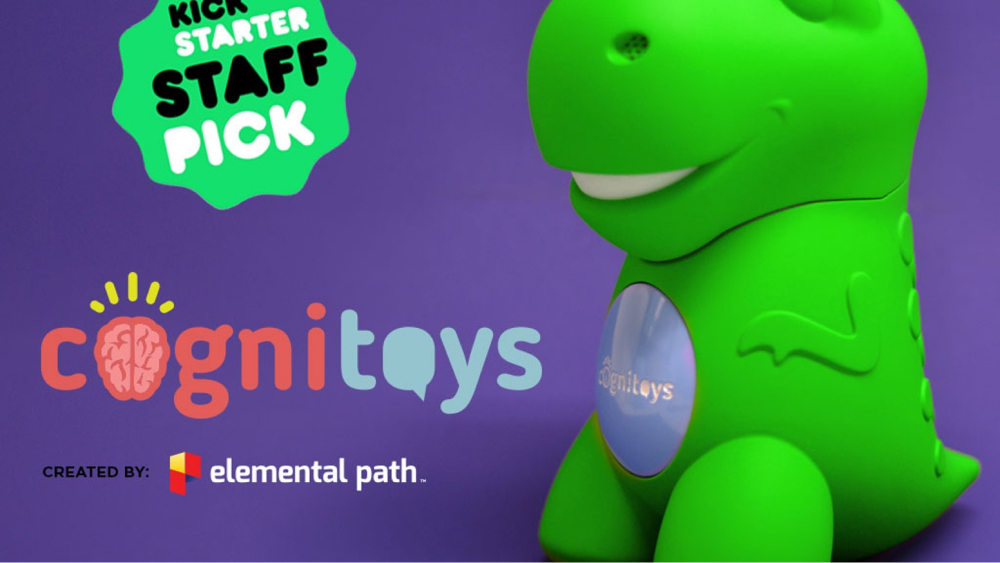
Being a super-smart company making super-smart toys for kids, Elemental Path has come a long way since it debuted its first Cognitoy on the Hardware Battlefield stage at CES in 2016. The smart toy maker debuted on Kickstarter with an IBM Watson-powered toy dinosaur kids could communicate with.
IBM Watson combines machine learning, natural language processing, computer vision, data mining, and human/computer interaction to mimic the workings of the human brain. The toy company, nevertheless, has switched to its own proprietary software for its new dino robot, the STEMosaur. The new dino looks similar to Elemental’s original smart toy but is now a translucent green and lets kids put it together and program it.
#5. Querium Corporation
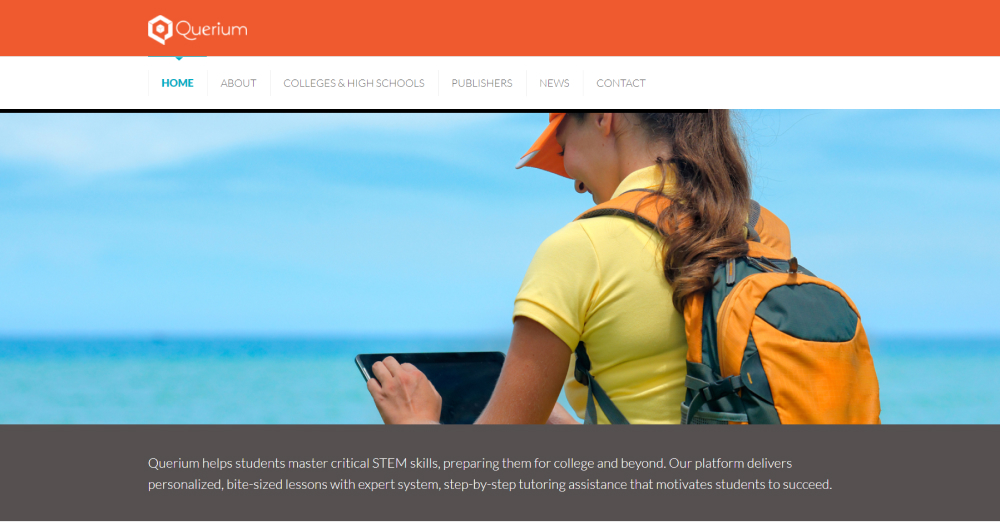
Querium leverages AI to deliver customizable STEM (math, engineering, technology, and science education) tutoring lessons to students, preparing them for college and beyond.
The Querium platform delivers personalized, bite-sized lessons and step-by-step tutoring assistance. Its personalized program is called StepWise and it works on smartphones and computers. By analyzing answers and length of time for STEM it took to complete tutoring sessions, Querium’s AI gives teachers insights into a student’s learning habits and designates areas in which the student could improve.
The Bottom Lines
AI in education is more than science fiction – it is revolutionizing the education face by changing the way individuals access learning and teaching information. Adoption is on the rise yet some existing concerns necessitate a methodical and measured approach.
Current applications mainly leverage machine learning and real-time data integration, but the future of AI depends on broader applications capable of adaptively applying practical intelligence to empower the critical emotional connections that drive student performance.

